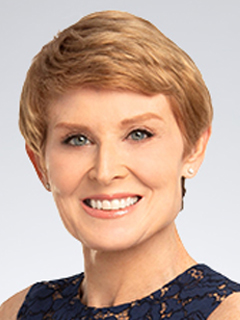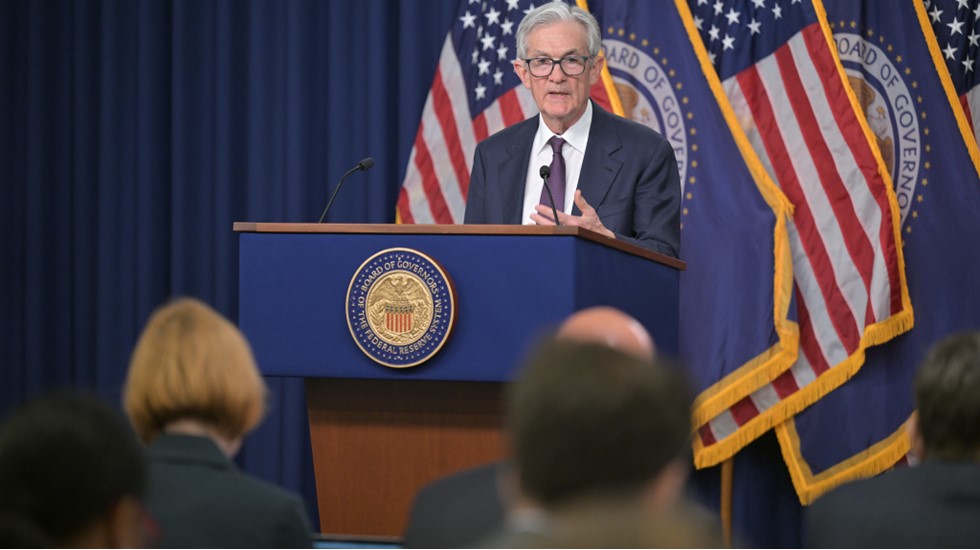Fed split over rate cut decision: No signals on a September cut
The challenge for the Fed would be a deterioration in employment.

July 30, 2025
The Federal Open Market Committee (FOMC) - the policy setting arm of the Federal Reserve -voted to hold rates in the 4.25% to 4.5% range for the fifth consecutive meeting in July. Governors Christopher Waller and Michelle Bowman both dissented, stating that they preferred that the Fed cut short-term interest rates by a quarter point rather than hold rates higher for longer. Waller has been clear about his position. He expects that any bump in inflation that we see from tariffs will be transitory, while the deterioration in growth and the labor market could be more consequential in response to tariffs.
Dissents by governors are less common than dissents by the regional Fed presidents, as they work the closest to the chairman in Washington, DC. Two dissents among the Board of Governors are highly unusual; it has not occurred since December 1993. Governor Adriana Kugler was not at the meeting and did not cast a vote. She is a known inflation hawk and would have voted with the majority to hold rates unchanged.
The statement accompanying the decision downgraded the assessment of the economy, with growth moderating despite tariff distortions. The Fed qualified its assessment of uncertainty regarding the outlook, saying it is elevated instead of diminishing. Chairman Jay Powell was queried whether the change to the assessment was notable. He said uncertainty had diminished last meeting, but not this meeting. That is a small adjustment.
That said, we should expect the Fed to become less unified as we get closer to a potential cut in rates. (Powell admitted as much and said that the meeting itself was one of the better ones the Fed has had due to the healthy level of debate.) The uncertainty surrounding tariffs is still staggeringly high, while the lags on when and how tariffs affect the economy are much like those for monetary policy: long and variable. It can take anywhere from six to 18 months for the full effects of tariffs to show up in inflation and unemployment.
Still, today’s GDP data implied that the PCE index, the Fed’s target, accelerated much faster than expected in June. That data and revisions for the previous months are due tomorrow, but the Fed staff will have made the same calculations that we did. It suggests that the PCE and the core index both increased 0.5% during the month, well above market expectations of 0.3%. That translates to a 2.7% rise in overall PCE from a year ago in June, up from only 2.3% in May.
The core PCE, which strips out the volatile food and energy components and provides insight into where inflation is going, soared an implied 2.9% from a year ago. That is the hottest pace since early 2024 and the wrong direction for the Federal Reserve.
Pauses to the most prohibitive of tariffs delayed the worst of consequences. Still, the effective rate on tariffs looks poised to peak at around 20% before year-end, nearly double the current pace. Worse yet, inflation in June appears to be broadly based with both goods and service sector prices accelerating. That suggests we may be feeling some contagion from the tariff induced rise in inflation.
Meanwhile, firms that had absorbed much of the initial inflation due to tariffs have begun warning of price hikes. Coffee prices were already up at a double-digit pace in June CPI data. Tariffs of 50% on Brazilian coffee, which is a primary source for coffee beans, could add to those price hikes. There were more executive orders today on tariffs that are still unclear about their timing. That is adding to uncertainty.
The leadership within the Federal Reserve is sorting into three camps:
- Governors Waller and Bowman top the list of doves who worry more about the blow to profits and the labor market from tariffs than the threat of a bump in inflation. Waller argues that one-third of tariffs are being absorbed by producers, one-third by retailers and one-third by consumers. That is less pass-through to consumer prices than we saw during the 2018-19 trade war, but it is still early in the game. Many producers have argued that they are close to a tipping point on how much they can continue to absorb.
- Those straddling the fence on rate cuts would like to see at least two more months of data on inflation and employment post-tariffs to see which effects are larger. They may be willing to open the door to a possible September rate cut, but won’t commit to do so yet, which is why Powell underscored flexibility without signaling a cut. He wants options in case employment deteriorates more rapidly as well.
- The last group represents a very narrow minority; seven of the 19 participants at the June meeting forecast no rate cuts for 2025. They worry about the lags in tariff effects, their uneven rollout and the risk that tariffs could trigger a more pernicious bout of inflation, or worse, stagflation. Proximity to the pandemic-induced inflation is particularly worrisome as it may make it easier for firms to hike prices. They will be watching closely to see if the acceleration in both services and goods inflation implied by today’s PCE data persists. Contagion is what some of the early surveys on tariffs by the Fed suggested.
The hardest challenge for the Fed would be a deterioration in employment along with an acceleration in inflation, which is what most within the Fed’s leadership expect. The extent of those shifts is the point of contention and subject to uncertainty. That leaves the Fed in the uncomfortable position of traversing a high wire without a safety net. The political pressure to cut will intensify if the labor market weakens while inflation is picking up. (Understatement.)
Aging demographics and curbs to immigration are dampening the upward pressure on unemployment, by curbing the supply of workers. That is masking underlying weakness in the labor market, where the pace of hiring and quits is below 2019 levels. That leaves us more vulnerable to a move into the red on payroll employment if layoffs spike in response to tariffs.
The Fed knows that and will be on watch for a downside surprise to employment. That may not be enough to get the whole FOMC to cut but would fuel speculation about a September rate cut. Fed Chairman Jay Powell will have his address in August at the Jackson Hole Symposium to either fuel or rebuke such speculation.
My guess is that he may not have the data he needs to send a clear signal on a September cut by then. We still expect the first cut at year-end. The financial market pricing of rate cuts has moved down from 2.7 cuts before year-end in June to 1.5 cuts after the press conference. Financial markets are moving closer to the forecast we have had since April.
Powell noted that the labor market is in balance and used the word “solid” four times when referring to it. However, he acknowledged some downside risks, which were clearly expressed at the meeting. Waller’s dissent is based on a view that the labor market may be weaker than it appears. Add persistently elevated inflation, and the committee feels that it is still necessary for policy to be “modestly restrictive.”
The Fed knows from surveys that there will be more pass-through. What they don’t know is whether firms will be able to make those price hikes stick.
One notable comment from Powell was that the Fed is currently looking through some of the tariff-induced inflation by not rising rates. That is important to remember as the Fed holds rates higher for longer. They are doing that instead of raising rates as inflation moves up in response to tariffs.
Powell underscored the difficulty in getting the timing right. Inflation has not come down to the Fed’s target, which raises the risks it could persist. That is while downside risks on the labor market are rising.
Any near-term gains on employment would quickly be erased by even higher inflation if the Fed were to stimulate too soon.

Diane Swonk
KPMG Chief Economist
Bottom Line
The Fed is moving closer to a tipping point on rate cuts but is approaching that move with caution. It cannot afford to allow inflation to reignite given persistently high price levels, even if that means a rise in unemployment. The problem is that by the time it has enough evidence as to whether any tariff-induced inflation we endure is transitory, the labor market could have weakened further.
Why risk it? Any near-term gains on employment would quickly be erased by even higher inflation if the Fed were to stimulate too soon. There is only one way for the Fed to ensure it meets its full employment mandate over time; that is to ensure that any tariff-induced inflation is temporary. The Fed is trying to get us back to a world where inflation is no longer top of mind. We are still a long way from achieving that goal. Tariffs have delayed the timing.
Explore more

Powell stays uncomfortably on the sidelines
The Fed’s trajectory on rates was unchanged with two cuts.

KPMG Economics
A source for unbiased economic intelligence to help improve strategic decision-making.

Insights from the Emerald Isle: On tour with economists abroad
Other economies are strengthening trade ties between them, leaving the US behind.
Subscribe to insights from KPMG Economics
KPMG Economics distributes a wide selection of insight and analysis to help businesses make informed decisions.
Meet our team
